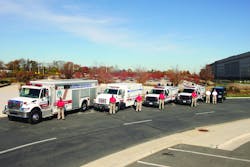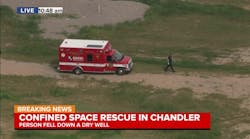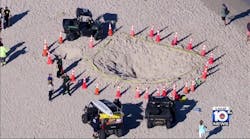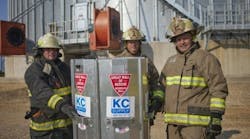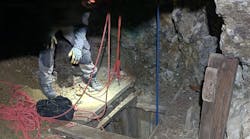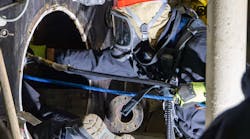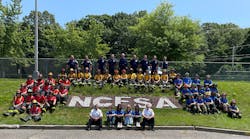The Pentagon, located in Arlington County, VA, is the headquarters of the U.S. Department of Defense and the world’s largest office building in terms of square footage – 6.5 million square feet, 3.7 million is used for offices. The building has five floors above ground and two below ground. Approximately 23,000 military personnel are employed at the Pentagon, along with 3,000 non-defense support personnel.
While the building is massive looking from the outside, once inside you do not get the feeling you are in such a large building. The building is almost a city within itself with many areas that resemble a shopping mall. There is an athletic club, 20 fast-food outlets, a full-service restaurant, and many retail shops and professional services. The Pentagon also has its own Metro subway station and bus terminal. The interior of the building contains a pentagon-shaped, five-acre courtyard. During the Cold War, the Russians thought there was a missile silo in the courtyard and, for a time, a bull’s-eye was placed at the center of the courtyard for them to view from their satellites. This was eventually replaced by a snack bar.
Ground was broken for the construction of the Pentagon on Sept. 11, 1941, exactly 60 years before the hijacked American Airlines Flight 77 was intentionally crashed into the west side of the building by terrorists. (The building was dedicated on Jan. 15, 1943.) The 9/11 crash killed 189 people, including five terrorists, 59 passengers and 125 people at work in the Pentagon.
Following the 9/11 attack, the present-day Pentagon Force Protection Agency (PFPA) was established and charged with safeguarding the occupants, visitors and infrastructure of the Pentagon Reservation. The agency is made up of law enforcement personnel (U.S. Pentagon Police); criminal investigative and protective services agents; threat-management agents; chemical, biological, radiological, nuclear and explosives (CBRNE) technicians; and anti-terrorism/force protection and physical security personnel. This column focuses on the CBRNE Response Division.
Before the CBRNE division was created, it was preceded by a Bio Agent Testing (BAT) team. Today’s CBRNE division is composed of full-time personnel with military and fire/hazardous materials service backgrounds. For now, the CBRNE division is quartered off site in a former warehouse in Arlington. A new home for the division and its equipment and vehicles is under construction in the maintenance area of the Pentagon Reservation. This facility will enable the division to house all of its response vehicles, which now are kept in a fenced area.
Presently, there are 32 dedicated response personnel and 45 total in the CBRNE division. They respond to the Pentagon and its facilities and protect a daytime population of up to 35,000 people. On an annual basis, the members respond to several hundred calls. Experienced personnel are hired from the outside and hazmat certification is conducted in house. Pentagon police officers are trained by the CBRNE division to the Hazardous Materials Operations Level and in the use of Level C chemical and respiratory protection.
CBRNE division vehicles are designated for functional assignments during a response. Each vehicle carries initial-response equipment and personal gear for assigned technicians. The Rescue/RIT ERV (Rapid Intervention Team Emergency Response Vehicle) also carries EMS equipment. Three 2009 Ford F-550/Fouts Brothers utility-body ERVs are designated as follows: one ERV for entry operations; one ERV for decontamination; and one ERV for Rescue/RIT.
The largest vehicle in the CBRNE fleet is a 2003 International 7400/KME hazmat squad that carries large items, including bulk supplies, additional technical decon equipment, additional personal protective equipment (PPE), mitigation supplies and rehab equipment and provides a command/research area. The 2002 GMC Mobile Analytical Laboratory is used to perform on-site analysis of samples using benchtop gas chromatography/mass spectrometry (GC/MS) and biological sample analysis. This vehicle was originally outfitted for the National Guard Civil Support Teams and carries the same types of equipment. The remaining response vehicles are Chevrolet Suburbans of various years. One Suburban contains a command module for the hazmat branch officer or incident commander to perform incident command and accountability functions. Part of the CBRNE division is the Explosive Ordnance Disposal (EOD) unit, which is the only civilian bomb squad in the U.S. Army.
One of the many assets maintained by the CBRNE division is a Remotec MK3 Mod 0 robot provided by the Hazardous Devices Division. The robot is currently being outfitted with monitoring equipment for chemical warfare agents, toxic industrial chemicals/toxic industrial materials (TICs/TIMS) and radiological materials. The robot will be used to survey an incident prior to team member making an entry. This will allow the gathering of basic atmospheric readings, enhance incident size-up and assist in the selection of PPE. The robot will also be used to provide video and audio from the “hot zone” to the command post. The robot can also be used to haul equipment into the “hot zone,” reducing the workload of responders wearing PPE.
The CBRNE division uses a wide variety of hazmat research materials that are common to all response teams. Electronic resources include the HazMaster G3, COBRA and WISER software. Monitoring equipment used by the CBRNE division includes:
• Chemical – MultiRAE, Ppb RAE 3000, Area RAE, ChemPRO 100, LCD 3.3, Miniwarn, Colorimetric Tubes, pH paper, potassium iodide starch paper, M-8 Paper, M-9 Tape, HazCat Kit
• Analytical – Hapsite, Griffin 450 GC/MS, HazMat ID
• Biological – Bio-Check 20/20, Handheld Assays, Razor
• Radiological – Identifinder, Raider, Ludlum, AN/UDR-14, Polymaster GN Pager
Initial-entry instruments are carried in black suitcases for easy access during an emergency. Those instruments include Ludlum and accessories; Miniwarn and pump attachment; Chempro 100; digital camera; MultiRAE; Identifinder; plus additional batteries, chargers and consumables.
Chemical protective suits used by the CBRNE division are Trellchem by Trellborg for Level A and Tyvec F for Level B. They also carry military Saratoga and Lanx chemical protective overgarments. The Saratoga suit employs spherical carbon technology to provide effective body protection from all known chemical/biological warfare agents. LANX Fabric Systems use a technology of polymerically encapsulated activated carbon, a new and unique technology which provides extremely uniform carbon distribution and chemical protection. Respiratory protection used for chemical suits are Scott self-contained breathing apparatus (SCBA) and M 40 APR masks and powered air purifying respirators (PAPRs). In-suit communications are provided by Scott Envoy Radiocom system.
Much of the infrastructure inside the Pentagon for communications, monitoring and security is secret. Photography is not allowed except for the interior 911 Memorial and the Medal of Honor room. Fixed monitors for chemical radiological and biological agents are very advanced and extremely sensitive. Portable instrumentation can identify any unknown substance.
Major hazmat exposures include the swimming pool, heating and cooling systems, and the fuel farm on the east side of the Pentagon Reservation. Terrorist or criminal acts may present a wide range of threats involving chemical, biological, radiological, nuclear and high-yield explosive materials. All commercial vehicles entering the Pentagon Reservation are screened for CBRNE materials. Additionally, 100% of the mail sent to the Pentagon is screened.
Most common chemicals found in any city would also likely be found in the Pentagon as part of daily operations at the facility, transportation hub and parking lot. The majority of responses at the Pentagon involve suspicious letters and packages or those containing white powder. Protests are common at the Pentagon and during such events the CBRNE team establishes a decontamination capability as a precaution. Any mitigation or clean-up that may be required as a result of a hazmat or CBRNE event is conducted by the Pentagon Safety Office. Pentagon police will determine whether a response by the CBRNE division is required. If environmental issues arise, the CBRNE division works with Environmental Protection Agency (EPA) regional teams and is assisted by the EPA for environmental crimes. Mutual aid is provided by the Arlington County Fire Department.
• • •
For additional information about the CBRNE Response Division, contact Chief Jonathan R. Starling at [email protected] or 703-601-3958.
ROBERT BURKE, a Firehouse® contributing editor, is the fire marshal for the University of Maryland Baltimore. He is a Certified Fire Protection Specialist (CFSP), Fire Inspector II, Fire Inspector III, Fire Investigator and Hazardous Materials Specialist, and has served on state and county hazardous materials response teams. Burke is an adjunct instructor at the National Fire Academy and the Community College of Baltimore, Catonsville Campus, and the author of the textbooks Hazardous Materials Chemistry for Emergency Responders and Counter-Terrorism for Emergency Responders. He can be contacted at [email protected].
